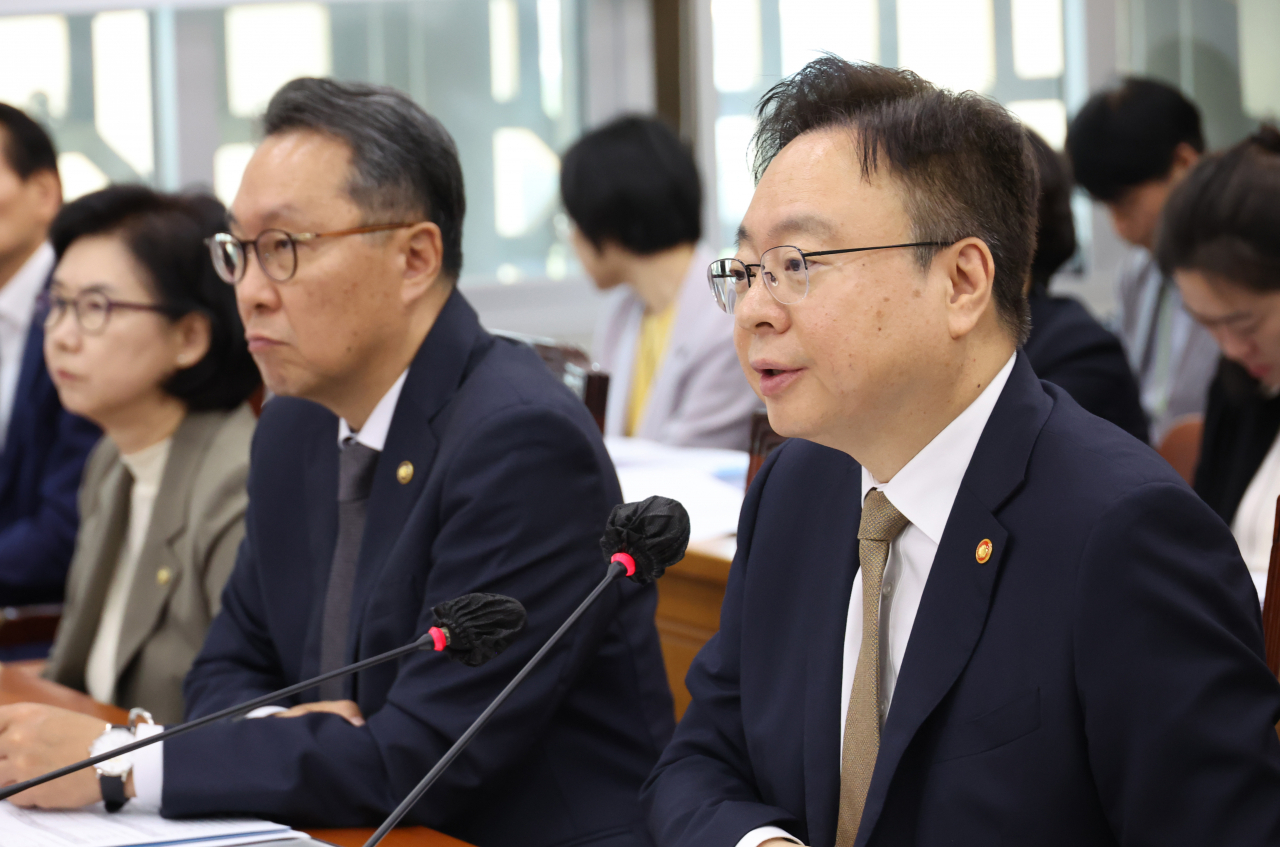 |
Minister of Health and Welfare Cho Kyu-hong speaks at the National Assembly's audit on Wednesday. (Yonhap) |
The South Korean government may announce its plan to increase the medical school enrollment quota as early as next week, according to local reports Friday.
The government is reportedly reviewing a plan to increase the medical school enrollment quota by 500, from the current quota of 3,058, which has remained unchanged since 2006.
If expanded, the new quota will be applied starting in 2025. Minister of Health and Welfare Cho Kyu-hong also said, “We are preparing to reflect it in the 2025 college entrance examination,” at the National Assembly's ministry audit on Wednesday.
The government’s plan to increase the number of medical students came as the country continues to suffer from a major shortage of doctors in vital specialties, including pediatrics and cardiothoracic surgery. The country has also been facing difficulties in securing physicians in less populated cities and towns.
According to the Health Ministry’s data provided by Rep. Jung Choun-sook, a lawmaker from the opposition party, the ratio of medical graduates to inhabitants in South Korea came to 7.2 in 2022, lagging behind the OECD average of 13.6.
The ministry further projected the number of doctors per 1,000 inhabitants will remain at some 2.9 in 2035 even if the government decides to increase the medical school enrollment quota by 1,000 starting next year -- also behind the OECD average of 4.5.
The local medical community is, however, opposing the government’s new plan, arguing that merely increasing the number of medical students would not solve the shortages of doctors in specialties that are less favored for their less lucrative earning prospects and comparatively worse work-life balance.
“Increasing the number of medical students will not stop them from choosing certain specialties, like dermatology, ophthalmology and plastic surgery, which have more lucrative business prospects,” a pediatrician working in Gyeonggi Province said. “The government needs to introduce more detailed policies that can (influence) medical students to choos relatively less favored medical areas,” the pediatrician added.
Despite the medical community’s opposition, the government is likely to push ahead with its plan mainly as the public appears to welcome the government’s move.
According to a survey of 1,003 people, released by Democratic Party of Korea lawmaker Kim Won-i, a majority of survey respondents said the medical school enrollment quota should be increased between 300 and 1,000. Around 24 percent of the respondents said the quota should be expanded by more than 1,000.
However, there is still a possibility that the government may hold back from its plan if doctors' groups decide to go on strike.
In 2020, the Korea Medical Association, the nation's largest union for doctors, and the Korean Intern Resident Association announced plans to stage an all-out strike to protest against the government’s plan to increase the quota by 4,000.







![[Weekender] Korea's traditional sauce culture gains global recognition](http://res.heraldm.com/phpwas/restmb_idxmake.php?idx=644&simg=/content/image/2024/11/21/20241121050153_0.jpg)